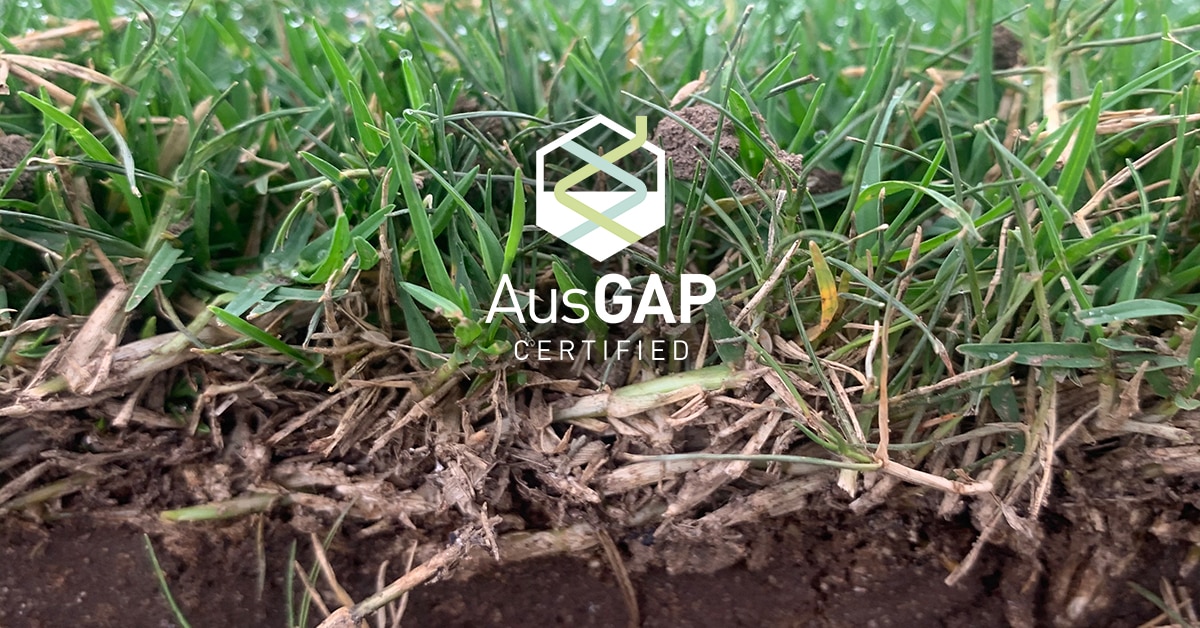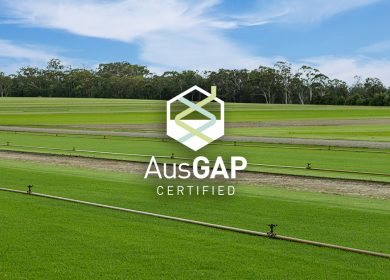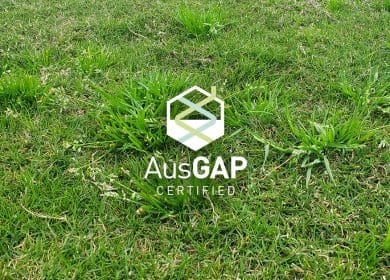
Thatch is a layer of living and dead plant material between turfgrass leaf tissue and the soils surface. Moderate thatch levels provide stronger wear tolerance, nutrient retention, and healthy microbiome. However, excess levels of thatch can decrease playability of turf surfaces, increase disease pressure, reduce pesticide efficacy, and water infiltration. There are many ways to control thatch levels, industry standards involve disruptive mechanical practices that can leave the area unusable for a period of time. Biological thatch control is being studied more frequently as a viable option to reduce thatch without disrupting the surface. Read this week’s blog to find out more about biological thatch control and its place in turfgrass management.
What is thatch?
Thatch is a tightly intermingled layer of living and dead stems and roots which accumulate between the actively growing grass and the soil. Thatch is an essential component of an actively growing turfgrass at healthy levels. Thatch develops more readily on high maintenance lawns than on low maintenance lawns and can build in excess levels due to the reduction of organisms that decompose thatch or cause plant material to build up faster than the microorganisms can break it down. Thatch problems commonly happen in compacted soils since healthy microorganisms do not thrive in these conditions. Furthermore, excess use of Nitrogen can promote disease and thatch development.
What is biological thatch control?
Biological thatch reduction options such as bio-stimulants are applied in small quantities to enhance plant growth and development (Schmidt et al., 2003). Bio-stimulants usually contain some source of sugar such as sucrose or glucose, plant nutrients at low rates, various acids, and microorganisms. Biological thatch control works through promoting greater root development, and by introducing cellulase enzymes (an enzyme that turns cellulose to glucose) produced by healthy bacteria and fungi essential to the degrading of thatch (McCarty et al., 2020).
What are the current methods of thatch control?
Current common methods of thatch reduction vary in practices from topdressing, aerating, verticutting, and blackstrap molasses. These practices are an essential part of sports turf management and turf management in general but can be disruptive to the surface leaving the area unusable for a period of time. Physical thatch control can also increase the chance of injury to the turf and decrease recovery potential but has been the most effective methods of removing thatch in most studies (Weaver et at., 2021).
What are studies suggesting?
Previous studies have investigated biological thatch control in comparison with traditional means of thatch control. Inconsistent results have been found regarding biological thatch reduction, however, have a valid scientific basis for their use may exist. Cellulase as a biological control of thatch has proven benefits for hybrid Bermudagrass showing short term thatch reduction but long term benefits were not seen as the glucose enzymes were rapidly consumed by soil microorganisms (Schmidt et al., 2003). Similar results were seen in Zoysia grasses (Weaver et al., 2021). In a two-year study of industry standard thatch control methods (topdressing, blackstrap molasses, and aerating) and two bio-stimulants, all treatments provided lower thatch thickness than sand topdressing. Blackstrap molasses provided greatest root weight for both years but also provided the lowest root length. A culmination of studies have shown inconsistent results making it difficult to recommend bio-stimulants purely for thatch reduction over traditional practices already used in the industry (Weaver et at., 2020).
Further study is required on the effectiveness of biological thatch reduction and what turfgrass varieties will benefit. What is shown is that the introduction or stimulation of soil microorganisms through cellulase can provide effective thatch reduction in short term use. However, thatch control has been found to be more effective in traditional methods such as adequate soil management, topdressing, aerating and verticutting. Furthermore, it would be beneficial to remember that thatch at healthy levels serves an important role in healthy turf growth, soil microbiome, and root development.
References:
Center for Agriculture, Food, and the Environment. 2012. What is Thatch?. Available at: https://ag.umass.edu/turf/fact-sheets/what-is-thatch
Weaver, JR, McCarty, LB, Quisenberry, VL, Hubbard, LR., Bridges, WG, Brown, PJ. Evaluating biological thatch control in turfgrass. Int Turfgrass Soc Res J. 2021; 1– 5. https://doi.org/10.1002/its2.36
Weaver, JR, McCarty, LB, Quisenberry, VL, Hubbard, LR, Bridges, WG, Brown, PJ. Evaluating biological thatch control on Zoysia matrella (L.) Merr. golf greens. Int Turfgrass Soc Res J. 2021; 1– 7. https://doi.org/10.1002/its2.43
Carrow, R.N., B.J. Johnson and R.E. Burns. 1987. Thatch and quality of Tifway bermudagrass turf in relation to fertility and cultivation. Agronomy Journal 79(3):524-530 https://doi.org/10.2134/agronj1987.00021962007900030025x
Weaver, J. and McCarty, B., 2020. Evaluating biological thatch control in turfgrass – GCMOnline.com. [online] Gcmonline.com. Available at: https://www.gcmonline.com/course/environment/news/biological-thatch-control-turfgrass


